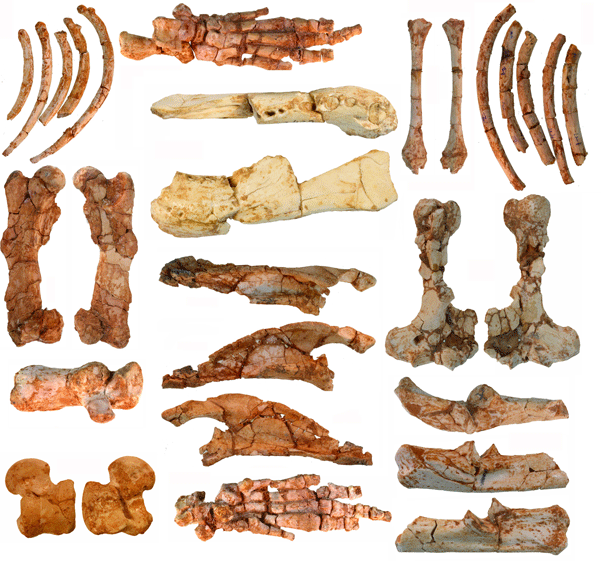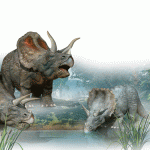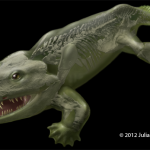
The skeletons of Chinese pangolin (top) and Ernanodon antelios (bottom). Image: Manis/Wikimedia commons; Ernanodon © Peter Kondrashov
It’s hard to track down members of a family when many of them disappeared millions of years ago.
After the dinosaurs went extinct 65 million years ago, mammals took full advantage of their disappearance — new unusual species, many of which are only distantly related to the ones we see today, emerged and roamed the Earth. One of these was Ernanodon antelios, a weird-looking mammal that was first discovered in 1979. When the distorted, incomplete specimen was studied almost 30 years later, it raised more questions about its evolution and habits than it solved.
Now a new specimen found in Mongolia has shed light on the life and relationships of this strange mammal. Described in the Journal of Vertebrate Paleontology, the fossil preserves most of the arms, legs and backbones of the mammal and includes many bones that were missing from the original fossil. “Few other fossil mammals presented as many controversies in the scientific world as Ernanodon did and we are glad the new skeleton helped us resolve them,” says lead author Peter Kondrashov from A.T. Still University, in the US.
First of all there was an identity issue to answer, as scientists weren’t sure whether the original distorted skeleton represented one animal or consisted of the bones of several different species. By comparing the bones of the new find to those of modern mammals, the researchers have confirmed that the original bones belonged to a single individual that, from its strong limbs and large claws, was specialised for digging.
“We compared [the] Ernanodon skeleton with skeletons of modern mammals that are good diggers and identified features that were similar between the two,” Kondrashov explains. “We also compared Ernanodon to other mammals with different types of locomotion to make sure we are correct in our assumptions.”
These specialisations had caused another controversy: the identity of Ernanodon’s closest relatives. The ancient mammal didn’t leave behind any descendants, making locating any distant connections a challenge. Scientists though that it might have been related to sloths or armadillos, but Kondrashov and his colleagues showed that Ernanodon is more closely related to an extinct group of North American mammals called palaeanodonts.
As these mammals have also vanished, the scientists had to keep looking down the family tree until they reached modern pangolins (scaly ant-eaters) and concluded that Ernanodon represents a very early branch of the pangolin family tree. “Ernanodon was a dead-end lineage… and this was the main difficulty in trying to classify it and…identify its closest relatives,” Kondrashov says. “Now we know who these relatives are.”

The elements of the Ernanodon skeleton found in Mongolia. Credit: © Peter Kondrashov






